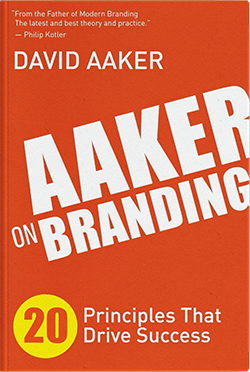BLOG
Build Your Brand From The Inside Out
Building an internal brand can inspire employees to be your very best ambassadors.
Test your organization by asking employees two questions.
- What does your brand stand for?
- Do you care?
If employees are unsure of the brand vision or don’t care, there is little chance that you will successfully implement your business strategy. There are several benefits to having a strong internal brand. A clear, compelling internal brand provides direction and motivation to employees and partners. People and teams will be more likely to know if a decision or program is “on-brand” if the internal brand is successfully communicated.
The internal brand can inspire employees to find and implement creative, breakthrough brand-building programs, to stretch for a “big” idea. An employee base that is energized by a strong brand will be motivated to talk about the brand to others on social media and elsewhere. A solid brand, especially one with a vision that includes a higher purpose, is likely to provide an employee with meaning and job fulfillment. An activated internal brand strategy can support the organizational culture which can be a foundation of a strategy and its implementation. As Peter Drucker once said “culture eats strategy for lunch.”
So how do you communicate the brand to employees?
There are three stages involved: learning about the brand vision, believing the vision and that the brand can deliver it and living the brand by feeling inspired, empowered and becoming a brand advocate internally and externally.
Learning About the Brand Vision
The learning path can and should involve all the communication vehicles available such as newsletters, workshops, brand videos, brand books and personal efforts by individuals such as brand ambassadors, senior managers and influencers.
A brand vision can both capture the vision and reflect its importance to the culture especially if the CEO uses it regularly. But the learning effort should go beyond communication. It should link the vision to the business strategy and make clear that there is a reason for it to live. Executives explaining the “what and why” behind the business strategy and the role of the internal brand vision should play a key role in person. The learning effort can be motivated by highlighting gaps between the aspirational brand vision and the current reality.
Believing in the Brand Vision
Problems such as “the customer experience is not on-brand” or “the innovation stream is not adequate” can be posed to get traction. If there is excessive focus on the vision itself, there is a risk of precipitating an “I disagree” position. The believing stage involves putting substance behind the vision to signal organizational commitment. Three steps can make the point.
- Put visible programs in place to make the brand vision and its associated business strategy actually succeed. That might mean a culture-changing training program, offering an innovation plan, an advertising program or a customer experience enhancement. It should have substance and will involve investment.
- Align the evaluation and reward people and programs around the new initiative. Measurement and rewards drive behavior. In the early 1990s, IBM was poised to be broken up into seven parts, but CEO Lou Gerstner entered with a brand vision to deliver integrated solutions for clients—solutions that spanned the firm. As part of his culture-changing effort, employee evaluation was changed to emphasize organizational rather than silo performance and the company added a dimension reflecting the ability of people to demonstrate cross-organization cooperation. This sent a huge signal to the firm.
- Create a brand champion—an individual or a team that is in charge of the brand vision and willing to carry the flag. He or she should be a primary internal brand spokesperson and communicate the brand idea to colleagues and encourage them to find creative ways to communicate the brand to others. The brand champion might create a team of brand ambassadors—credible people to represent the brand throughout the organization.
Living the Brand Vision
The living stage, where people are inspired to action, is the most difficult and crucial. Participative workshops where employees are asked to build visual montages, find role models, evaluate existing programs, portray a customer interaction or develop new programs can play an important role. Task forces can add energy, visibility and action. Microsoft, for example, has the “Microsoft Green Teams” that look for ways to further the “green” initiative through outreach programs into the community or through internal communication programs.
“An activated internal brand strategy can support the organizational culture.”
Getting employees in front of customers can be one way to make the brand vision come alive. P&G, for example, puts executives in front of customers regularly in the home (living it) and in the store (with shop-alongs or as behind-the-counter participants). Zappos.com encourages its people to engage by tweeting, and more than 500 do so regularly. An organization that lives the brand will use brand values as a criterion for selecting and retaining employees. Zappos.com has values that include delivering “wow” experiences and being a bit weird. One of the screening questions is to name something weird that you have done.
The Zappos trial period evaluation focuses on a fit with its brand values. Harrah’s, which hires people who are exceptionally upbeat and positive, holds an “American Idol”-type audition with a set of judges to screen candidates. The Haas School of Business admits students in part by how well their personality matches the school’s values. Power brands are built from the inside out, and internal branding needs to be a priority. It must go far beyond brochures and a CEO pep-talk.
FINAL THOUGHTS
Employees are a powerful force for brand-building and a potential army of brand ambassadors. In order to enlist this force, make sure they understand the brand’s purpose.

